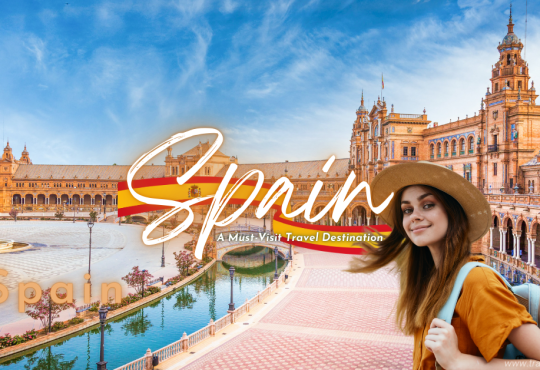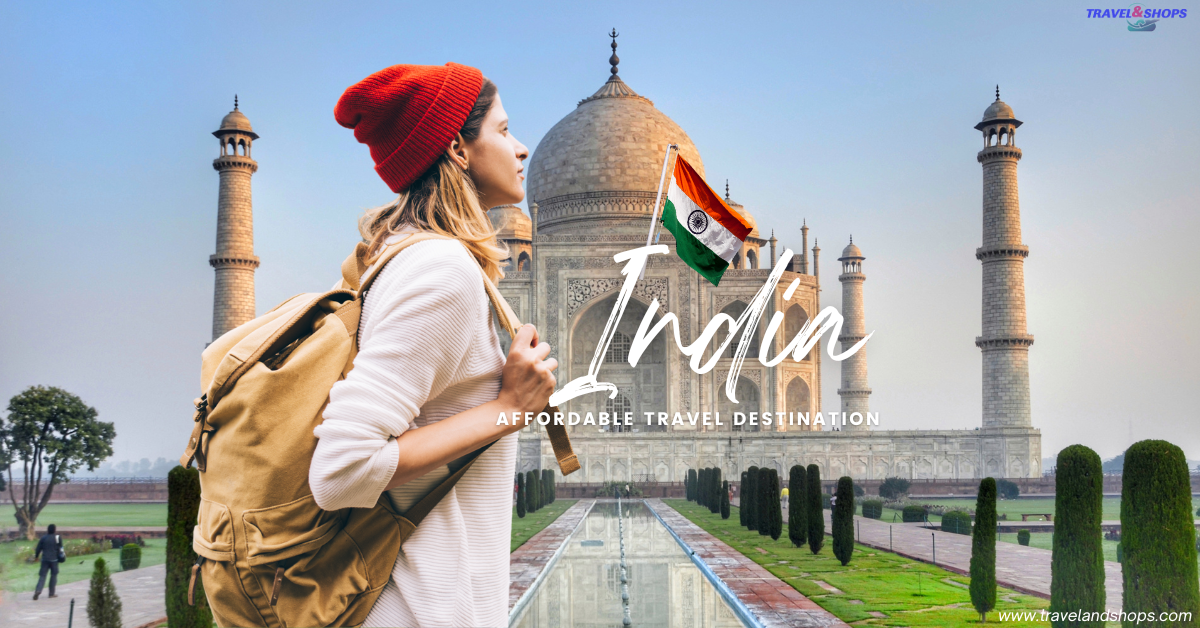
If you’re dreaming of an exotic, affordable travel destination filled with color, culture, and adventure, India may just be your perfect choice. Known for its diversity in landscapes, architecture, and cuisine, India offers endless opportunities to explore — without burning a hole in your wallet. Whether you’re trekking through the Himalayas, visiting ancient forts, savoring spicy street food, or wandering through bustling markets, India is one of the cheapest travel destinations to visit. But exactly how affordable is it, and what should you budget for your trip? This guide will help you navigate India’s wonders with a budget-friendly approach.
With just a bit of planning, you can make the most of your money and see some of the country’s most beautiful and culturally rich areas. From detailed budgeting tips to food recommendations and must-see destinations, here’s how you can embark on an unforgettable yet budget-friendly travel adventure in India.
India is Best Affordable Travel Destinations—8 Reasons
India has long held a reputation as a haven for budget travelers, thanks to a combination of factors that allow travelers to enjoy memorable experiences without the hefty price tag. Here’s a closer look at the specific reasons why India stands out as an affordable yet richly rewarding travel destination:
1. Currency Exchange and Purchasing Power
The Indian rupee has a favorable exchange rate for most Western travelers, allowing visitors to get more value from their currency. A stronger dollar, euro, or pound translates to a significantly higher purchasing power in India, making even the finer experiences — such as multi-course dinners, private car rentals, or stays in heritage hotels — surprisingly affordable.
2. Abundance of Budget Accommodation
India caters to a wide range of travelers, from luxury seekers to budget-conscious backpackers. This is reflected in its diverse accommodation options:
- Guesthouses and Hostels: Budget travelers have a variety of choices in guesthouses, homestays, and backpacker hostels. Prices for these accommodations can range from $5 to $15 per night, even in popular tourist spots.
- Local Homestays: Rural areas and smaller towns offer homestays where travelers can stay with local families, often including home-cooked meals. This not only reduces costs but also provides a cultural immersion at minimal expense.
- Religious Accommodations: In cities like Varanasi and Rishikesh, religious institutions such as temples and ashrams offer simple lodging options at little to no cost, making it easy for budget travelers to stay in spiritual hubs without spending much.
3. Affordable and Convenient Public Transport
India’s public transportation is extensive, varied, and among the cheapest in the world.
- Railway System: India’s train network is vast, covering nearly the entire country and offering a range of classes. The sleeper and general classes are particularly budget-friendly, with fares that can be as low as $2 for long-distance journeys.
- State Buses and Shared Transport: Intercity buses are frequent, with ticket prices starting at just a few dollars. For short distances, options like auto-rickshaws, shared cabs, and cycle rickshaws make getting around convenient and affordable.
- Low-Cost Flights: India’s budget airlines, such as Indigo, SpiceJet, and AirAsia India, frequently run discounted fares between major cities, offering an affordable alternative to lengthy train journeys for those short on time.
4. Cheap, Authentic Indian Street Food
India’s culinary scene is legendary, and one of the biggest perks is how affordable it can be, especially at street stalls and local eateries:
- Street Food Stalls: From samosas and chaats to dosa and kebabs, street food dishes are delicious, filling, and typically cost between $0.50 and $2 per item.
- Local Restaurants (Dhabas): Dhabas, or roadside eateries, are a staple of Indian cuisine and offer substantial meals like thali (an assortment of dishes served on a platter) for under $3. They’re also a great way to sample regional specialties.
- Inexpensive Vegetarian Meals: India has a large vegetarian population, making vegetarian meals more common and usually cheaper. Lentil dishes, vegetable curries, rice, and bread (like naan or roti) are both budget-friendly and widely available.
5. Low-Cost (or Free) Attractions and Experiences
While some countries have high entrance fees for popular attractions, India offers a mix of affordable and free sights:
- Free Cultural Landmarks: Many cultural and spiritual sites, such as temples, churches, and mosques, are free to enter. In cities like Jaipur, for example, you can visit iconic spots like the Hawa Mahal’s exterior without paying a fee.
- Low Entry Fees at Monuments: When there are entry fees, they’re typically under $10, even for world-renowned sites like the Taj Mahal.
- Natural Beauty: From beaches in Goa and Kerala to hill stations in Himachal Pradesh, there’s no fee to enjoy India’s natural landscapes. Places like the Ganges riverfront in Varanasi or the ghats of Pushkar provide scenic beauty at no cost.
6. Vibrant Local Markets with Affordable Shopping
Shopping in India is a budget traveler’s delight, offering a chance to buy unique souvenirs, textiles, and handicrafts at low prices:
- Street Markets: Bustling local markets like Delhi’s Sarojini Nagar or Mumbai’s Colaba Causeway offer everything from clothes to jewelry at bargain prices. Haggling is expected and can often reduce costs by up to half.
- Handicrafts and Local Goods: India’s vast artisanal industry includes crafts from every state, with items like Jaipur’s blue pottery, Kashmir’s Pashmina shawls, and Mysore’s sandalwood products sold at affordable prices.
7. Lower Cost of Daily Essentials
Everyday essentials in India, such as bottled water, snacks, toiletries, and even SIM cards, are inexpensive. Many travelers get a local SIM card with a data plan for as little as $3 per month, keeping them connected and saving money on roaming fees.
8. Personalized Experiences and Guided Tours on a Budget
India’s tourism industry offers a range of experiences that are affordable and enriching:
- Heritage Tours and Local Guides: Hiring a local guide for a day can cost as little as $10 to $20, providing you with valuable insight without breaking your budget.
- Affordable Yoga and Wellness Retreats: For those interested in wellness, India’s yoga and meditation retreats in places like Rishikesh and Kerala offer packages starting at around $200 per week, including food and accommodation.
- Cultural Performances: Tickets to dance shows, music performances, or traditional theater often cost under $5, adding a memorable cultural dimension to any trip.
India’s combination of affordable transportation, lodging, dining, and diverse experiences makes it a perfect choice for travelers looking to explore without overspending. Whether you’re on a tight budget or simply looking to maximize value, India provides an immersive and budget-friendly travel experience that’s hard to beat.
Setting a Budget for Your Trip to India
Setting a realistic budget for your trip to India can help you make the most of your time while managing expenses effectively. Since India offers a wide range of options for food, accommodation, transportation, and activities, you can tailor your budget according to your preferences — whether you’re a backpacker or looking for a mid-range experience. Here’s a detailed look at what to expect and how to allocate your funds:
Daily Budget Breakdown for Different Types of Travelers
- Budget Traveler: For backpackers or budget-conscious travelers, expect to spend between $20 and $40 per day. This includes dormitory-style hostel accommodations, street food meals, and public transportation.
- Mid-Range Traveler: For those seeking a bit more comfort, a daily budget of around $50 to $100 should suffice. This includes stays in budget hotels, dining in local restaurants, and a mix of public and private transportation.
- Luxury Traveler: If you’re looking for more high-end services, luxury hotels, private transport, and fine dining, expect a budget starting from $150 to $250 per day.
1. Accommodation Costs
India offers a wide spectrum of accommodations, from budget hostels to five-star hotels. Here’s what you can expect in terms of lodging expenses:
- Hostels and Dormitories: $5 to $15 per night. Hostels are abundant in popular tourist cities like Delhi, Mumbai, Jaipur, and Goa. Apps like Hostelworld can help you find affordable dorms and private rooms, with many hostels offering free Wi-Fi, lockers, and common areas.
- Budget Hotels and Guesthouses: $10 to $25 per night. Budget hotels are plentiful in India, and you’ll often find clean, comfortable rooms with basic amenities like hot water and Wi-Fi. Homestays and guesthouses in rural areas provide a more authentic experience and may include meals.
- Mid-Range Hotels: $30 to $60 per night. These accommodations offer added comforts like air conditioning, room service, and often include breakfast. Many mid-range hotels in cities like Jaipur or Udaipur provide charming decor with cultural touches.
- Luxury Hotels and Resorts: $100 to $300+ per night. For a splurge, India has an array of luxurious hotels with premium services. Cities like Mumbai, Delhi, and Udaipur are home to iconic hotels like the Taj and Oberoi, which are renowned for world-class hospitality.
2. Food and Dining Costs
India is famous for its culinary diversity, and dining options range from budget-friendly street food to fine dining. Here’s what you can expect to spend on meals:
- Street Food and Local Eateries: $1 to $3 per meal. Street food is a staple in India, with famous dishes like samosas, chole bhature, and dosa costing under $1 each. Local eateries, called dhabas, offer hearty meals for around $2–$3.
- Casual Restaurants: $3 to $7 per meal. Casual dining in India allows you to enjoy more variety and local ambiance at a low cost. Try South Indian thalis, biryani, or vegetarian meals, all of which are delicious and budget-friendly.
- Fine Dining Restaurants: $10 to $20+ per meal. If you’re looking to try upscale Indian cuisine, fine dining restaurants in major cities offer extensive menus with Indian and international dishes. A meal for two in a high-end restaurant can cost between $20 and $50, which is still relatively affordable by Western standards.
3. Transportation Costs
India’s transportation options are varied, and costs depend on the mode of transport you choose. Here’s an estimate of daily transportation expenses:
- Local Transport (Auto Rickshaws, Buses): $1 to $5 per day. Auto rickshaws are popular for short trips and usually cost between $0.50 and $3, depending on the distance and city. Local buses are even cheaper, with fares starting as low as $0.10. In large cities, metro systems like those in Delhi or Mumbai offer affordable and efficient travel.
- Train Travel: $1 to $20 for longer distances. India’s train system is extensive and has various classes ranging from the affordable general class to more comfortable sleeper or AC classes. For example, a ticket from Delhi to Jaipur in a sleeper class might cost around $5, while an AC class could be around $15.
- Domestic Flights: $30 to $100 per flight. India’s low-cost airlines (like Indigo, AirAsia, and SpiceJet) offer frequent domestic flights, with competitive prices, especially if booked in advance. Traveling by air can save you time for cross-country trips, like from Delhi to Kerala or Rajasthan to Goa.
- Private Car Hire: $20 to $50 per day. Renting a private car with a driver is convenient and affordable for groups or those who prefer more control over their itinerary. Prices vary by region, but drivers are usually hired by the day and can cover multiple destinations.
4. Sightseeing and Activity Costs
India’s famous landmarks, historic sites, and natural wonders can be enjoyed on a budget, with many attractions either free or available at low entry fees:
- Heritage Sites and Museums: $1 to $10 per entry. Iconic landmarks like the Taj Mahal charge approximately $15 for foreign tourists, while most heritage forts, temples, and museums charge between $1 and $5.
- Guided Tours and Excursions: $5 to $20. Hiring a guide for the day is affordable, particularly in historic cities like Jaipur, Agra, or Varanasi. Many local guides are knowledgeable about the area’s history and can provide an enriching experience for around $10.
- Adventure Activities: $5 to $30. From trekking in the Himalayas to river rafting in Rishikesh, India offers various adventure activities at affordable prices. For instance, a guided trek might cost $15 per day, while water activities like rafting can be around $10 to $20.
5. Miscellaneous Costs
It’s always a good idea to allocate some extra funds for small purchases, unexpected expenses, or unique experiences. Here’s what miscellaneous expenses may include:
- SIM Card and Internet: $3 to $5 for a month. Travelers can easily purchase prepaid SIM cards with 4G data plans for around $3 to $5, which is useful for staying connected on the go.
- Shopping and souvenirs: $5 to $50. Markets across India offer a variety of local products at bargain prices. Popular items include textiles, jewelry, spices, handicrafts, and art. Bargaining is common in most markets, and you can often get great deals with a bit of negotiation.
- Tips and Gratuities: Around $1 to $2 per day. Tipping isn’t mandatory in India, but it’s customary to leave a small tip for hotel staff, guides, or drivers. It’s polite to leave around 10% at restaurants and small tips (under $1) for other services.
Sample Budget for a 10-Day Trip to India
For a budget traveler spending 10 days in India, here’s an estimated budget breakdown:
- Accommodation: $100 to $150
- Food: $30 to $70
- Local Transport: $20 to $50
- Intercity Travel (e.g., trains): $30 to $50
- Sightseeing & Activities: $50 to $100
- Miscellaneous (shopping, tips): $20 to $50
Total Estimated Cost for 10 Days: $250 to $470
This breakdown shows how a well-planned budget can make India an affordable yet diverse travel experience, offering rich cultural experiences and memorable sights without high costs. By following these guidelines, you can tailor your spending to match your budget and still enjoy the best of what India has to offer.
Tips for Budget-Friendly Travel in India
Traveling in India on a budget doesn’t mean compromising on experiences. With some smart planning and a few insider tricks, you can explore India affordably while soaking in all the colors, flavors, and experiences it has to offer. Here are some top tips to help you travel across India on a budget:
1. Use Public Transport Whenever Possible
- Trains and Buses: India’s public transport system is extensive and affordable. The Indian Railways network reaches almost every part of the country, offering a range of budget-friendly classes like Sleeper and General, perfect for long-distance travel. State-run buses are available in every city and town, costing just a few cents to a couple of dollars depending on the distance.
- City Metro Systems: In cities like Delhi, Kolkata, and Bangalore, metro systems provide a comfortable, low-cost way to explore urban areas without getting stuck in traffic. Metro cards and daily passes save even more money.
2. Book Domestic Flights in Advance
- Low-Cost Airlines: India has a competitive budget airline industry with carriers like Indigo, SpiceJet, and AirAsia India offering regular sales on domestic routes. For longer journeys, these flights can be more convenient and time-efficient than trains.
- Booking Tips: Aim to book flights at least a few weeks in advance for the best fares, and use price comparison sites to track and compare fares.
3. Opt for Budget Accommodations
- Backpacker Hostels: Hostels have become increasingly popular in India, especially in tourist hotspots like Goa, Rishikesh, and Jaipur. Many hostels offer dorm-style accommodations starting from $5, along with amenities like free Wi-Fi, common areas, and social events.
- Guesthouses and Homestays: Opting for family-run guesthouses or homestays is another great way to keep accommodation costs low. These options not only save money but also allow you to experience local culture firsthand. Websites like Airbnb and Booking.com list many of these budget-friendly places.
- Religious Accommodations: Some temples and ashrams, particularly in spiritual towns like Varanasi and Haridwar, offer simple lodging for travelers at a minimal cost or for free. These places are basic but safe and often include vegetarian meals.
4. Eat Like a Local
- Street Food and Dhaba Dining: Street food in India is both tasty and incredibly affordable. Try local favorites like chaat, pani puri, and dosas from reputable stalls for under $1. For a filling meal, head to dhabas — roadside eateries offering delicious and authentic Indian meals for as little as $2.
- Vegetarian Meals: India has a rich vegetarian cuisine, and vegetarian dishes tend to be cheaper than meat options. Dishes like dal (lentil soup), rice, and chapati (flatbread) are filling, nutritious, and widely available at a low cost.
- Thali Meals: Opt for a thali, a platter that offers a variety of dishes, rice, and bread. Thalis are a great way to sample local flavors and are budget-friendly, usually costing around $2 to $5.
5. Take Advantage of Free and Low-Cost Attractions
- Religious and Cultural Sites: India’s spiritual heritage is vast, with numerous temples, mosques, and churches that welcome visitors free of charge. Cities like Varanasi, Pushkar, and Rishikesh have beautiful religious sites that don’t require an entry fee.
- Parks and Markets: Local markets, like Delhi’s Sarojini Nagar or Mumbai’s Colaba Causeway, are free to explore and offer a slice of Indian life. You can spend hours wandering the colorful markets or relax in city parks, like the Lodhi Gardens in Delhi, at no cost.
- Affordable Entry Fees: For major attractions, entry fees are generally modest, often ranging from $1 to $10. For example, sites like Amber Fort in Jaipur charge around $7, while more prominent monuments like the Taj Mahal have higher fees for foreigners, but it’s still a fraction of the cost of similar sites elsewhere.
6. Master the Art of Bargaining
- Local Markets: Bargaining is common practice in India’s local markets, where prices are often initially inflated for tourists. Start by offering half the quoted price and negotiate from there. Keep it friendly and light-hearted — many vendors expect it, and it’s part of the shopping culture.
- Taxis and Rickshaws: For short trips, always negotiate the fare before getting into a rickshaw or taxi, especially in cities without regulated meters. Alternatively, you can use ride-hailing apps like Ola and Uber to avoid haggling and get clear fares upfront.
7. Use Prepaid SIM Cards for Affordable Data
- Local SIM Cards: Staying connected in India is inexpensive, thanks to affordable data plans. You can purchase a local SIM card from providers like Jio or Airtel at the airport or local shops. Plans cost as little as $3 to $5 for a month of data, allowing you to navigate, communicate, and even work remotely without relying on costly roaming charges.
- Download Apps for Navigation and Communication: Apps like Google Maps, Ola, Uber, and Zomato (for restaurant reviews) are invaluable when traveling in India. They help you find the best places, navigate routes, and avoid potential language barriers.
8. Plan Your Itinerary to Avoid Unnecessary Travel Costs
- Focus on a Region: India is vast, and covering too many destinations can lead to high transportation costs and rushed experiences. Instead, focus on exploring one or two regions thoroughly. For example, Rajasthan or Kerala can each fill an entire trip with unique cities, natural beauty, and cultural sites.
- Travel During Off-Peak Seasons: Visiting India during the shoulder season (just before or after the peak tourist months) means fewer crowds and lower prices on flights and accommodations. For example, September to November and February to April are great times to visit as the weather is pleasant and prices are lower.
9. Book Tours and Tickets Locally
- Local Travel Agencies: Booking tours through local travel agencies can often be cheaper than online pre-bookings. For instance, a day tour to the Golden Triangle (Delhi, Agra, Jaipur) is usually more affordable when booked on-site.
- Skip the Guided Tour When Possible: Many monuments and historic sites offer audio guides, which can be more affordable than hiring a private guide. Alternatively, you can download apps or research the history in advance to avoid extra costs.
10. Travel Light and Avoid Excessive Baggage Fees
- Pack Essentials Only: With affordable laundry services available in many hotels and hostels, you can travel light and avoid the added costs of checked luggage on domestic flights.
- Reusable Water Bottles: Carry a reusable water bottle with a filter, as it helps cut down on bottled water costs and is environmentally friendly. Many hotels offer purified water stations where you can refill.
11. Get Travel Insurance to Avoid Unexpected Costs
- Travel Insurance: Even though travel insurance adds an initial expense, it’s worth the cost to avoid potential medical expenses or losses. India has affordable medical care, but an emergency can still set you back financially. Travel insurance helps cover health issues, lost baggage, or trip cancellations.
Traveling on a budget in India is highly achievable, thanks to its range of affordable accommodations, transportation, and dining options. With these tips, you can explore the country’s diverse landscapes, vibrant cities, and cultural treasures without overspending, ensuring you have an enriching experience at an affordable cost.
Must-Visit Cities in India on a Budget
India is a land of contrasts, with each state offering something unique for travelers. From the majestic Himalayas in the north to the serene backwaters in the south, there’s a destination for every taste — and budget. Here are some affordable yet unforgettable places you should consider for your trip:
1. Rajasthan: The Land of Kings
Why Visit: Known for its royal palaces, desert landscapes, and vibrant bazaars, Rajasthan offers a taste of India’s rich heritage. From the Pink City of Jaipur to the blue-painted streets of Jodhpur, Rajasthan is steeped in culture and history, yet remains highly affordable.
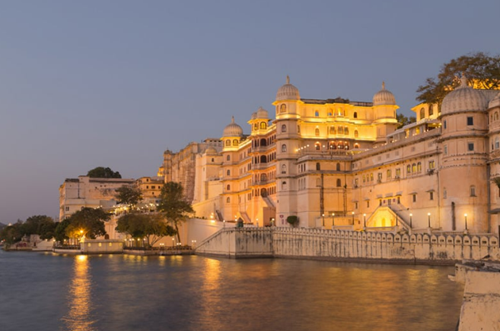
Top Attractions:
- Jaipur: Explore the Hawa Mahal (Palace of Winds), Amer Fort, and Jantar Mantar, with entry fees generally between $2 to $7 for foreigners.
- Udaipur: Often called the “City of Lakes,” Udaipur is known for its romantic lakeside setting. Many sites are free to explore, like the city’s bustling markets and the lakeside ghats (steps), while entry to City Palace is around $5.
- Jodhpur: Visit the Mehrangarh Fort, one of India’s most impressive fortresses, for around $7. Wander through the narrow blue streets of the old city — an experience that’s free yet unforgettable.
Budget Tips: Rajasthan is filled with affordable hostels, guesthouses, and homestays, often priced between $10 and $25 per night. Many heritage sites offer student discounts, so carry an ID if applicable.
2. Himachal Pradesh: Adventure and Peace in the Himalayas
Why Visit: For travelers seeking nature, adventure, and serene mountain landscapes, Himachal Pradesh is a must. Known for trekking, paragliding, and scenic hill stations, it’s perfect for outdoor enthusiasts on a budget.
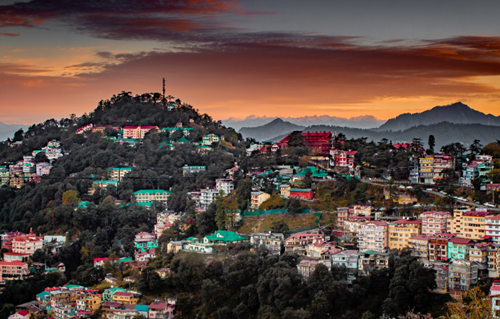
Top Attractions:
- Manali: A backpacker favorite, Manali offers lush valleys, adventure sports, and budget-friendly guesthouses starting from $8 per night. Visit Solang Valley for skiing in winter or paragliding in summer.
- Dharamshala and McLeod Ganj: Home to the Dalai Lama and Tibetan culture, McLeod Ganj is ideal for peaceful getaways and spiritual exploration. Entry to monasteries is free, and inexpensive treks, like the Triund trek, offer stunning views.
- Kasol and Parvati Valley: Known for its laid-back vibe, Kasol is a scenic village on the banks of the Parvati River. The village is a base for treks like Kheerganga, which is a budget-friendly hike costing only a few dollars for camping or homestay fees.
Budget Tips: Opt for shared taxis or local buses, which cost a fraction of private car rentals. Many cafes and homestays offer free Wi-Fi and meals as part of your stay package.
3. Varanasi: India’s Spiritual Heart
Why Visit: Varanasi, one of the world’s oldest cities, offers a profound cultural experience with its temples, ghats along the Ganges, and sacred rituals. Known for its deep spirituality, Varanasi is also surprisingly affordable.
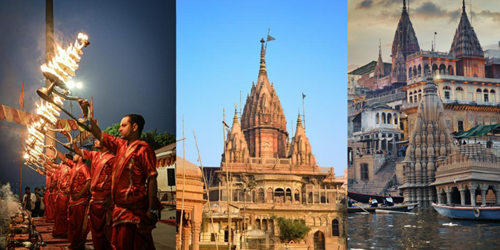
Top Attractions:
- Ganga Aarti at Dashashwamedh Ghat: Witness the evening prayer ceremony, a mesmerizing event that’s free for visitors.
- Kashi Vishwanath Temple: A revered temple dedicated to Lord Shiva, entry is free, though it’s best to go early to avoid long lines.
- Boat Ride on the Ganges: Enjoy a boat ride along the Ganges for a few dollars, best taken at sunrise to witness the city waking up along the river.
Budget Tips: Affordable accommodations can be found near the ghats for around $10 per night. Try local eateries or street food, such as kachoris and lassi, for a satisfying meal under $2.
4. Goa: Beaches and Beyond
Why Visit: Goa’s beaches are popular with both backpackers and families, known for their lively beach shacks, water sports, and relaxed vibe. Beyond beaches, Goa has Portuguese-inspired architecture and lush spice plantations.
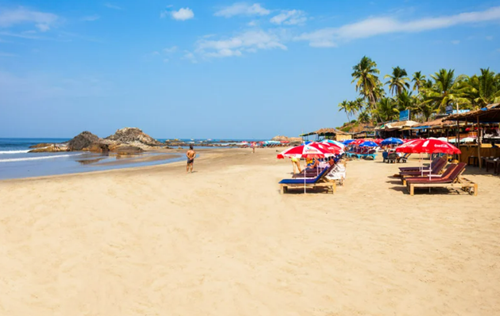
Top Attractions:
- Beaches of North Goa: Beaches like Anjuna, Vagator, and Calangute offer free access and affordable water sports rentals.
- Old Goa: Explore historical churches and cathedrals, such as the Basilica of Bom Jesus and Se Cathedral, with no or minimal entry fees.
- Dudhsagar Falls: A scenic waterfall that’s accessible via a train or a short trek; entry and travel fees are budget-friendly.
Budget Tips: Stay in budget-friendly hostels near the beaches, where dorms can start at $5 per night. Many local beach shacks offer meal deals and inexpensive drinks, making it easy to enjoy Goa without overspending.
5. Kerala: The Land of Backwaters and Greenery
Why Visit: Kerala, known as “God’s Own Country,” is famous for its backwaters, tea plantations, and rich culture. Whether you’re gliding through the backwaters or hiking through tea fields, Kerala offers a unique experience at an affordable rate.

Top Attractions:
- Alleppey Backwaters: Take a budget-friendly day cruise on a traditional houseboat or opt for the state-run ferry services that charge just a few cents.
- Munnar: Explore tea plantations, scenic viewpoints, and the Eravikulam National Park, which has a nominal entry fee. Many homestays in Munnar are affordable, with stunning views of the hills.
- Fort Kochi: Known for its blend of cultures, Fort Kochi is ideal for budget travelers. Attractions like the Chinese fishing nets, Jew Street, and St. Francis Church are either free or cost only a few dollars.
Budget Tips: Choose government-run houseboats for more affordable rates or share with fellow travelers to split costs. Local buses and trains are inexpensive ways to travel within Kerala.
6. Tamil Nadu: Ancient Temples and Coastal Charm
Why Visit: Tamil Nadu is known for its magnificent temples, charming beaches, and hill stations. From the towering gopurams (temple gateways) to the French-inspired streets of Pondicherry, this state offers a diverse experience at a low cost.
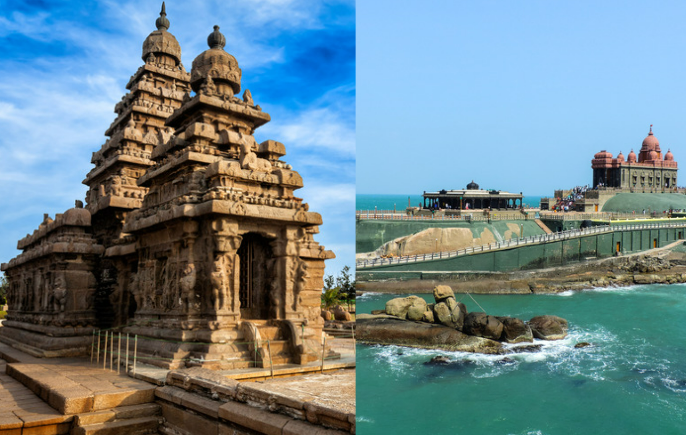
Top Attractions:
- Chennai’s Marina Beach: One of the longest urban beaches, it’s free to visit and offers a lively atmosphere with street food vendors.
- Mahabalipuram: This UNESCO World Heritage site features ancient rock carvings, temples, and sculptures. Entry to many attractions costs around $2.
- Pondicherry: Known for its French architecture and seaside promenades, Pondicherry is a peaceful coastal town with free and low-cost activities like visiting Auroville and the local beaches.
Budget Tips: Use local trains for short trips, as they’re much cheaper than taxis. In Pondicherry, affordable guesthouses run by Auroville residents offer serene stays with local insight.
7. Rishikesh: The Yoga Capital of the World
Why Visit: Set on the banks of the Ganges River with the Himalayas in the background, Rishikesh is a spiritual haven. Known for yoga retreats and adventure sports, it’s a budget-friendly option for those interested in spirituality and outdoor activities.
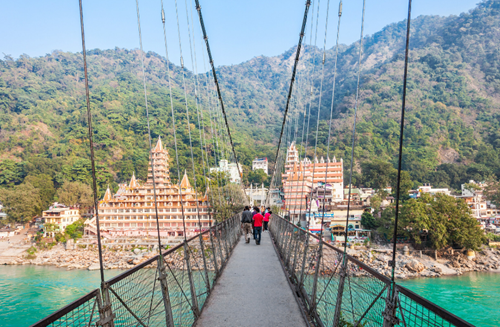
Top Attractions:
- Lakshman Jhula and Ram Jhula: These iconic suspension bridges are free to visit and provide great views of the river and temples.
- Yoga and Meditation Retreats: Many ashrams in Rishikesh offer affordable yoga classes or meditation sessions, starting at around $5 per session. Some even allow travelers to stay on a donation basis.
- Adventure Sports: Activities like river rafting, bungee jumping, and trekking are popular in Rishikesh. River rafting packages start at around $10, making it an affordable thrill.
Budget Tips: Stay in budget ashrams, which often include meals and yoga classes, or opt for riverside hostels starting at $5 per night. Local cafes serve budget-friendly vegetarian meals, which are both delicious and nutritious.
8. Hampi: A Historical Marvel
Why Visit: Hampi, a UNESCO World Heritage site in Karnataka, is a fascinating mix of ancient ruins, beautiful temples, and scenic landscapes. Known for its backpacker vibe, it’s one of the most budget-friendly destinations in South India.
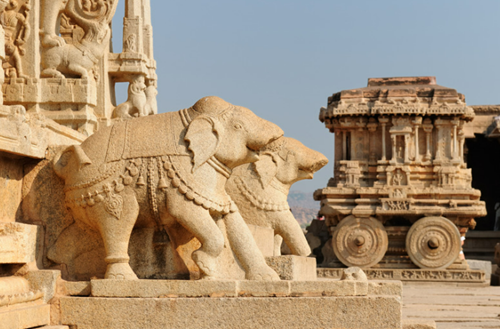
Top Attractions:
- Vittala Temple and Stone Chariot: These iconic ruins are the most photographed sites in Hampi, with entry fees around $5.
- Sunset Points: Hampi has various hills and rocky landscapes perfect for watching the sunset, like Matanga Hill, which is free to climb.
- Coracle Rides on the Tungabhadra River: These round boats provide a unique way to explore the river for a small fee of about $2 to $5.
Budget Tips: Hampi’s accommodations are affordable, with many guesthouses and hostels offering rooms for under $10 per night. Rent a bicycle for around $1 per day to explore the ancient ruins and temples.
9. Delhi: The Bustling Capital
Why Visit: Delhi, India’s vibrant capital, is a bustling metropolis that perfectly blends the country’s ancient history with its modern identity. From the grand Mughal architecture and colorful bazaars of Old Delhi to the sleek shopping centers and cafes of New Delhi, the city offers a rich cultural experience that’s surprisingly affordable for travelers.
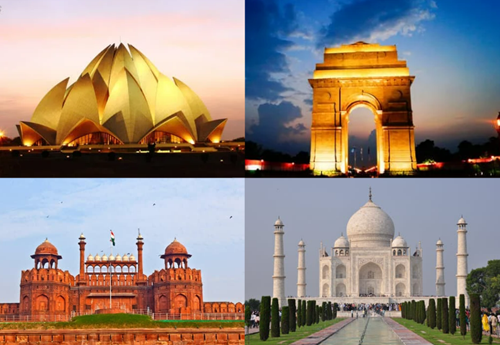
Top Attractions:
- Red Fort: This UNESCO World Heritage site is a historic marvel with an entry fee of around $5. It offers a glimpse into Mughal architecture and the royal lifestyle of past emperors.
- India Gate: Modeled after the Arc de Triomphe, this war memorial is free to visit and is surrounded by green lawns, ideal for an evening stroll or a budget-friendly picnic.
- Humayun’s Tomb: Often compared to the Taj Mahal, this stunning tomb has an entry fee of around $5 for foreigners and offers an impressive architectural experience.
- Qutub Minar: Another UNESCO site, this towering minaret and complex are awe-inspiring, with tickets costing around $5. It’s an iconic monument that showcases Delhi’s Islamic architecture.
- Lotus Temple: This Bahá’í temple is a serene spot for meditation, shaped like a lotus flower and free to enter.
Budget Tips:
- Affordable Dining: Delhi is a paradise for food lovers on a budget. Sample North Indian street food in places like Chandni Chowk, where you can try dishes like chole bhature, parathas, and jalebi for less than a dollar. Khan Market and Connaught Place also have affordable cafes and food courts for a taste of Delhi’s modern dining scene.
- Cheap Public Transport: The Delhi Metro is one of the cheapest and most efficient ways to get around the city, costing just a few cents per trip and covering most major attractions. Auto-rickshaws are also affordable, especially if you negotiate fares in advance.
- Shopping at Local Markets: For budget shopping, visit local markets like Sarojini Nagar or Janpath, where you can find clothes, accessories, and souvenirs at a fraction of the cost. Bargaining is expected, so don’t hesitate to negotiate for the best deals.
- Low-Cost Accommodations: Delhi offers a range of budget accommodations. Paharganj, located near the New Delhi Railway Station, is popular among budget travelers, with hostels and guesthouses offering rooms from around $5 to $20 per night.
Delhi’s mix of history, culture, and modern attractions makes it a memorable destination for budget travelers. With numerous free or low-cost sites, an extensive metro system, and delicious street food, you can enjoy India’s capital without overspending.
Food to Try While Wandering in India on a Budget
Food is an essential part of the Indian travel experience. Here are some budget-friendly Indian dishes that will satisfy your taste buds without breaking the bank:
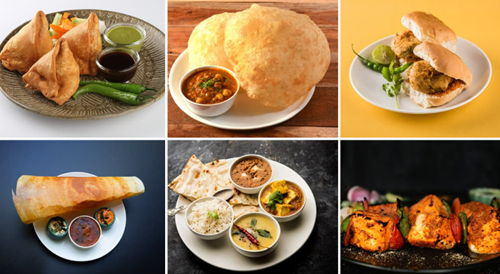
- Samosa – A popular street food snack filled with spiced potatoes.
- Chole Bhature – A delicious combination of spicy chickpeas and fried bread.
- Vada Pav – A Mumbai specialty, this potato patty sandwich is a must-try.
- Masala Dosa – A South Indian rice crepe with a spiced filling, perfect for breakfast.
- Thali – An assortment of dishes served on a single platter, available in both vegetarian and non-vegetarian versions.
- Paneer Tikka – Grilled cubes of paneer (Indian cheese) in a flavorful marinade.
- Pani Puri – Crisp, hollow puris filled with spicy water, chutneys, and mashed potatoes for an explosion of flavors.
Prices for street food can be as low as $1, while a meal at a local restaurant might cost between $3 and $7.
Making the Most of Budget-Friendly Travel in India
India is not just a destination; it’s an experience. As one of the most budget-friendly travel destinations, India offers a variety of experiences that allow you to connect with the culture, explore nature, and indulge in rich culinary traditions without overspending. By choosing local accommodations, dining on street food, and using public transport, you can have an incredible adventure while keeping your costs low.
India’s affordability, combined with its richness in culture and nature, makes it a truly unique travel experience. With these tips, you’ll be ready to explore its wonders on a budget, making memories to last a lifetime. Whether you’re a first-time traveler or a seasoned backpacker, India has something to offer every kind of visitor.





